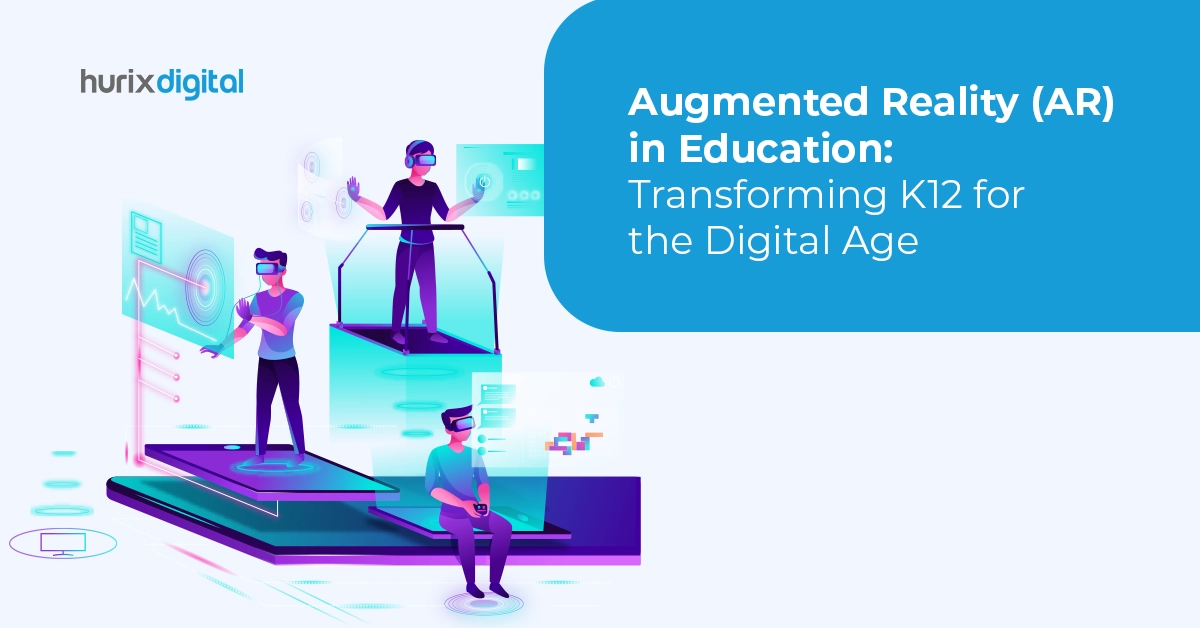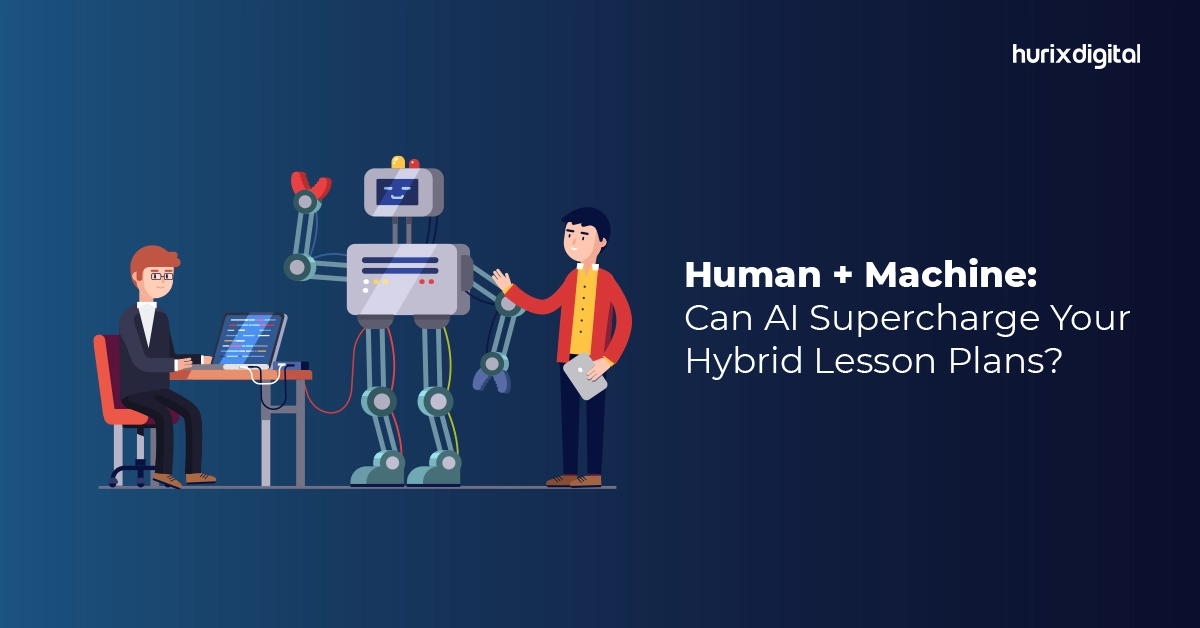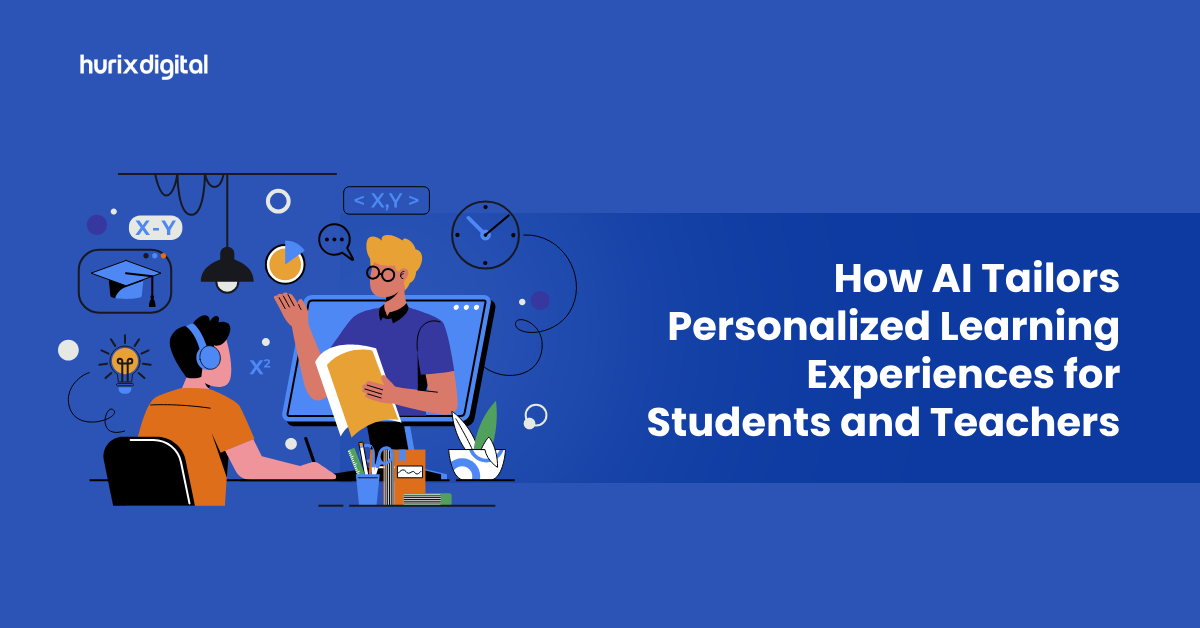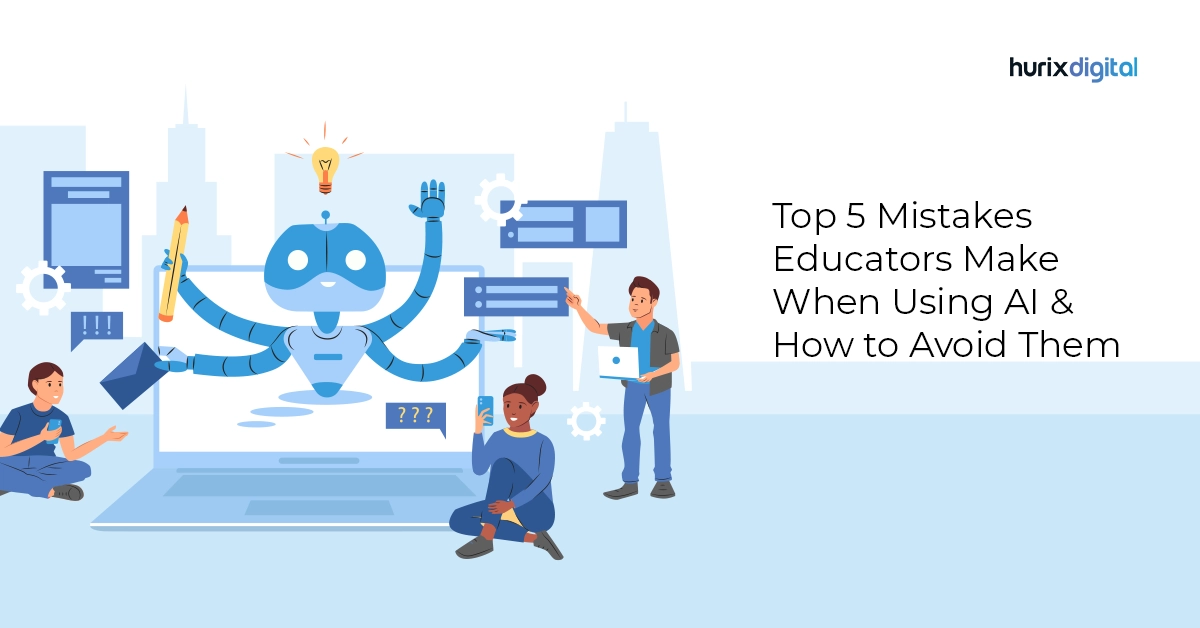Summary
This article explores the meaning of generative AI in education. It also explains the benefits and challenges of using AI in the classroom.
Artificial intelligence, aka AI, isn’t a new concept. It has been around since the 1950’s era. But in recent years, AI has been gaining a lot of traction.
The market size of generative AI was just USD 5.67 billion in 2020. It jumped to USD 23.17 billion in 2022 and is expected to reach USD 207 billion by 2030.
No wonder AI is the latest buzz in the tech industry, and the reasons are quite interesting to note.
Generative AI has revealed its potential to transform a wide variety of industries. A prominent name among them is the educational industry. The latest trends indicate that AI and gamification in education have the potential to usher in huge changes.
But what are these changes? Also, how beneficial will they be, and what about the challenges?
This article explores the benefits of AI in education, followed by the challenges. But first, let’s understand the meaning of generative AI in education.
Table of Contents:
- What Is Generative AI in Education?
- Benefits of Generative AI in Education
- Challenges of Generative AI in Education
- Conclusion
What Is Generative AI in Education?
By now, almost everyone knows that artificial intelligence or AI refers to the way machines simulate human intelligence. AI enables machines to conduct tasks generally related to human intelligence, such as problem-solving and learning.
Generative AI is a specific form or process of AI that generates new information, content, or output. This generative AI differs from the traditional AI methods at a fundamental level. Defined rules and clear instructions drove traditional AI methods.
Generative AI uses machine learning algorithms to identify patterns from existing data and generate content. In the context of education, generative AI develops new content that follows curriculum features and customizes learning experiences.
So, we can say that generative AI in education generates human-like content by leveraging deep learning models. The output responds to varied prompts, including questions, instructions, etc.
Benefits of Generative AI in Education
As a growing technology, generative AI holds immense potential to bring revolutionary educational changes. It can redefine learning experiences and improve learning outcomes in various ways.
Some of the major advantages of AI in education are as follows:
1. Generating Educational Resources
Generative AI can produce resources for education. Such resources include exercises, examples, questions, quizzes, and more. The application of generative AI in curriculum can also help to produce eBooks.
Teachers and students accessing such diverse learning materials can enhance comprehension and engagement.
The use of generative AI for content creation can also help the digital publishing industry. Publishers can benefit from the reduced cost of producing content through AI.
2. Boosting Creativity and Improving Learner Engagement
Generative AI can augment creativity. It can encourage students to explore their creative side by allowing them to create original content. Such content can include music, art, stories, and more.
Students can tap into their artistic persona by participating in a creative process, like creating music. This artistic freedom to experiment with various ideas can help them to cultivate a profound sense of self.
This technology can also foster curiosity and help students become more engaged in learning and discovering.
3. Customizing the Learning Experience
The role of AI in education can go beyond providing interesting learning opportunities. Rather, incorporating AI in education can personalize the whole learning experience.
When you introduce AI in curriculum development, it can customize learning content. AI algorithms can analyze student data and identify patterns involving interests, performance, and learning potential. Based on analyzed data, AI algorithms can offer adjusted activities and learning content to meet students’ individual needs.
Such personalization of the learning experience can engage students, motivate them, and help them to retain knowledge. AI can also offer personalized recommendations to help students identify the learning areas where they need to focus more.
4. Offering Adaptive Learning and Instant Feedback
Adaptive learning is being regarded as the future of AI in education. The use of adaptive learning in education can result in adapting data and learning content in real-time.
The interesting part is that adaptive learning systems can track data and help to evaluate student progress continuously. AI algorithms can design assignments and questions based on students’ learning abilities.
The technology can assess students’ performance and provide feedback and suggestions instantly. This approach can contribute to the learning process becoming more efficient and effective.
Also Read: Adaptive Learning Technologies: Shaping the Future of Instructional Design
5. Improving Teacher Training
Generative AI can help to produce personalized training modules for educators and teachers. The modules can help them to stay updated about the latest developments in teaching methods.
They can develop new skills related to their profession. Further, generative AI can automate student assessment and grading tasks. For instance, AI can assess and score tests.
AI-enabled assessment can reduce teachers’ workload and free up their time, allowing them to focus on other tasks. Teachers can use this time to interact with students and provide them with individualized instructions.
Also Read: 7 Roles of Artificial Intelligence in Learning and Development
Challenges of Generative AI in Education
While generative AI has a lot of potential to elevate learning, the technology isn’t completely free of challenges. Here are some of the major challenges of using AI for education:
1. Integrity Concerns
Generative AI is a technology that learns from existing systems, and that is exactly where the concern lies. Imagine that the data from which such a system learns is biased. The implication of this will include biases in the output.
As a result, students learning through this system will ingrain the bias without knowing about it. This challenge can be even bigger when AI and higher education are concerned.
Educators and developers must regularly monitor and evaluate the datasets to ensure their integrity and fairness to avoid such complexities.
2. Security and Privacy
Privacy can become a major concern for generative AI systems in education. These systems need access to huge amounts of data to generate content.
Such data can include sensitive student information. Potential data breaches and unauthorized access present genuine threats. This is where security concerns raise its head.
Institutions and organizations developing such systems must implement processes that protect student data and ensure complete privacy.
3. Over-Reliance on Technology
While generative AI is a helpful technology, relying too much on it to deliver learning experiences may not be ideal. Such a system can speed up things and offer customized learning solutions.
But it’s important not to eliminate the human factor from the educational landscape. It’s also vital to maintain a healthy balance between AI and humans.
Learners can still benefit a lot from real-time human interactions. Such interactions can help them develop their critical thinking and social interaction skills.
Conclusion
The role of AI in education is set to gain more prominence in the days to come. It is a clear sign of the changing times in education. Generative AI in education can offer a lot of benefits to learners.
However, it also presents some challenges. By partnering with an eLearning service provider, you can enjoy such learning experiences without considering the drawbacks.
If you are looking for a reliable service provider in eLearning, you can check out Hurix Digital. The company is an expert in delivering gamified eLearning solutions.
For more information on K-12 education, contact here.










